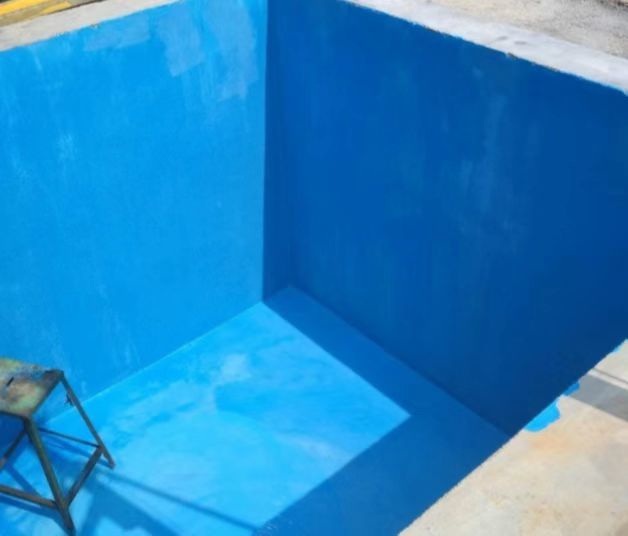Welcome to Jiangmen Tufeng Chemical Co., Ltd.
Oil based industrial paint
-
DB-1A Acrylic Metal Baking Paint Series
-
DB-2B Polyurethane Two-Component Paint Series
-
DB-3C Acrylic Plastic Paint Series
-
DB-4D Alkyd Antirust Paint Series
-
DB-7G Epoxy Anti-rust And Anti-corrosion Primer
-
DB-7G Epoxy Anti-Rust And Anti-Corrosion Paint Series
-
DB-7G High-temperature Anticorrosive Coating Is resistant To 300 Degrees
-
DB-8H Fluorocarbon Paint Series
-
DB-9K Rubber Paint Series
-
DB-11M High Temperature Paint Series
-
DB-12N Floor Paint Series
-
DB-16T Thermal Insulation Coating Series
-
DB-17 Polyurea Waterproof Coating Series
-
DB-18V Oil-Based Exterior Wall Paint Series
-
Polyamide Side Lacquer
-
Epoxy Cloud Iron Intermediate Paint
-
Epoxy Rich In Zinc Primer
-
Chlorinated Rubber Anti-corrosion Coating Material
-
 Highly Chlorinated Polyethylene Anti-corrosion Coating
Highly Chlorinated Polyethylene Anti-corrosion Coating
-
 Water-resistant Coatings
Water-resistant Coatings
Road insulation coating
I. Introduction DB-16T With the increasing depletion of Earth's energy, environmental protection and energy conservation have become the theme of this era. Under the tide of the times, scientific research and technological development regard energy saving, consumption reduction, and economic efficiency improvement as one of the main breakthrough directions, and even fire retardant coating technology is no exception. In recent years, the developed building insulation coatings—reflective insulation coatings—have achieved significant breakthroughs in energy conservation. To understand reflective insulation coatings, we need to start with their formulation. The formulation of reflective insulation coatings primarily consists of binders, heat-reflective pigments, fillers, and additives, and is a new type of fire-retardant and heat-insulating fire protection material that achieves insulation by efficiently reflecting sunlight. Among them, thin-layer insulating reflective coatings are representative of this type of coating. They are mainly used in various occasions requiring thermal insulation in the field of construction engineering, meaning high-reflectivity insulating coatings are applied to the surface of external protective structures. This can reduce the absorption of solar radiant heat by buildings, prevent the temperature rise of building surfaces caused by absorbing solar radiation, and at the same time reduce the transfer of heat indoors, thereby achieving building protection and fire resistance. II. According to the insulation mechanism of reflective insulation coatings, they can be mainly divided into three types Barrier-type Insulation Coatings: Achieve insulation by impeding heat transfer. When preparing the coating, low thermal conductivity materials are mainly selected, and low thermal conductivity air is introduced as a raw material after the coating forms a film. Common heat-blocking fillers for this type of reflective insulation coating include hollow glass microspheres, hollow ceramic powder, hollow fibers, sepiolite, vermiculite, perlite, etc. Heat-Reflective Insulation Coatings: Mainly achieve insulation by reflecting the spectral energy of sunlight within the 400~1800nm range. Its reflective materials use nanomaterials. Radiant Barrier Coatings: Mainly achieve insulation by emitting absorbed sunlight and heat into the air at specific wavelengths. Its formulation materials are various metal oxides, such as iron oxide, manganese dioxide, cobalt oxide, copper oxide, and other reflective spinel dopants. The above three are just the most basic classifications. In many cases, we can also compound reflective insulation coatings with the aforementioned functions to form multi-functional insulation coatings, such as those with both barrier and reflective properties. This is also the future development trend of reflective insulation coatings. What's more valuable is that reflective insulation coatings have both decorative and insulating functions, belonging to functional coatings. Therefore, this type of coating has been widely applied in the field of construction engineering, mainly for reflective insulation of roofs and walls, and is also widely used in granaries. Moreover, the application areas and usage scenarios of reflective insulation coatings are continuously expanding. With the infinitely increasing demand for building energy efficiency in the future, the attention they receive will inevitably show geometric growth! Due to their superior performance, reflective insulation coatings caused a strong market reaction upon their introduction. Even the state correspondingly issued standards for reflective insulation coatings (JC/T1040-2007) requiring: solar reflectivity no less than 85%, and hemispherical emissivity no less than 83%. This is to regulate the reflective insulation coating market. III. Construction Ratio Paint: Thinner (1:0.3-0.5) IV. Storage 1. Paint and thinner should be sealed and stored in a cool place, fire-proof, leak-proof, sun-proof, high-temperature resistant, and away from fire sources. 2. The storage period of the coating is one year or more. 3. After opening the can, the coating should be thoroughly stirred evenly to prevent pigment sedimentation causing color difference. 4. If the workpiece surface has attachments such as dust, particles, or oil stains, it will damage the appearance, so it should be wiped clean before spraying. 5. Due to different plastic substrates, sufficient testing should be done before spraying to avoid affecting paint adhesion. 6. During construction, please take relevant labor protection measures. If skin comes into contact with the coating, it can be washed with laundry detergent and water. If you feel unwell, please seek medical help.
- Product Description
-
I. Introduction
DB-16T As the earth's energy is increasingly depleted, environmental protection and energy saving have become the theme of this era. Under the general trend of the times, scientific research and technological development have taken energy saving, consumption reduction, and improvement of economic benefits as one of the main breakthrough directions, and even fire-retardant coating technology is no exception. In recent years, the developed building thermal insulation coating --- reflective thermal insulation coating --- has made significant breakthroughs in energy saving. To understand reflective thermal insulation coatings, we need to start with their formulation.
The formulation of reflective thermal insulation coatings mainly consists of binders, heat-reflective pigments, fillers, and additives. It is a new type of fire-retardant and thermal insulation material that achieves insulation by efficiently reflecting sunlight. Among them, thin-layer thermal insulation reflective coatings are representative of this type of coating, mainly used in various applications requiring thermal insulation in the construction engineering field. That is, by applying highly reflective thermal insulation coatings on the surface of external protective structures, it can reduce the building's absorption of solar radiant heat, prevent the temperature rise of building surfaces due to solar radiation absorption, and also reduce heat transfer indoors, thereby achieving building protection and fire resistance.
II. Based on the thermal insulation mechanism of reflective thermal insulation coatings, there are mainly three types:
Barrier Thermal Insulation Coatings:
Achieves thermal insulation by impeding heat transfer. When preparing the coating, low thermal conductivity materials are primarily selected, and low thermal conductivity air is introduced as raw material after the coating forms a film. Commonly used heat-blocking fillers for this type of reflective thermal insulation coating include hollow glass beads, hollow ceramic powder, hollow fibers, sepiolite, vermiculite, perlite, etc.
Heat-Reflective Thermal Insulation Coatings:
Mainly achieves thermal insulation by reflecting the spectral energy of sunlight within the 400~1800nm range. Its reflective material uses nanomaterials.
Radiant Thermal Insulation Coatings:
Mainly achieves thermal insulation by emitting absorbed sunlight and heat into the air at specific wavelengths. Its formulation materials are various metal oxides, such as iron(III) oxide, manganese dioxide, cobalt(III) oxide, copper oxide, and other reflective spinel dopants. The above three are just the most basic classifications; often, we can also combine reflective thermal insulation coatings with the above-mentioned functions to form multifunctional thermal insulation coatings, such as those with both barrier and reflective capabilities. This is also the future development trend for reflective thermal insulation coatings.
More valuable is that reflective thermal insulation coatings have dual functions of decoration and thermal insulation, classifying them as functional coatings. Therefore, this type of coating has been widely applied in the construction engineering field, mainly for reflective thermal insulation on roofs and walls, and is also widely used in granaries. Furthermore, the application areas and usage scenarios for reflective thermal insulation coatings are continuously expanding. With the infinitely increasing demand for building energy efficiency in the future, their importance will inevitably show geometric growth! Thanks to their superior performance, reflective thermal insulation coatings have garnered a strong market response since their introduction. Even the state has consequently issued the reflective thermal insulation coating standard (JC/T1040-2007) requiring: solar reflectance no less than 85%, and hemispherical emissivity no less than 83%. This is to regulate the reflective thermal insulation coating market.
III. Construction Ratio
Paint: Thinner (1:0.3-0.5)
IV. Storage
1. Paint and thinner should be sealed and stored in a cool place, protected from fire, leakage, sun exposure, high temperatures, and away from ignition sources.
2. The coating's storage period is one year or more.
3. After opening the can, the coating should be thoroughly stirred to prevent pigment settling and color difference.
4. Adherents such as dust, particles, or oil stains on the workpiece surface will damage the appearance, so it should be wiped clean before spraying.
5. As various plastic substrates differ, thorough testing should be conducted before spraying to avoid affecting paint adhesion.
6. During construction, please take appropriate labor protection measures. If skin comes into contact with the coating, it can be washed with laundry detergent and water. If discomfort occurs, please seek medical help.
Previous Page:
Next Page:
Related Products
Product Message
If you are interested in our products, please leave your email, and we will contact you as soon as possible, thank you!










